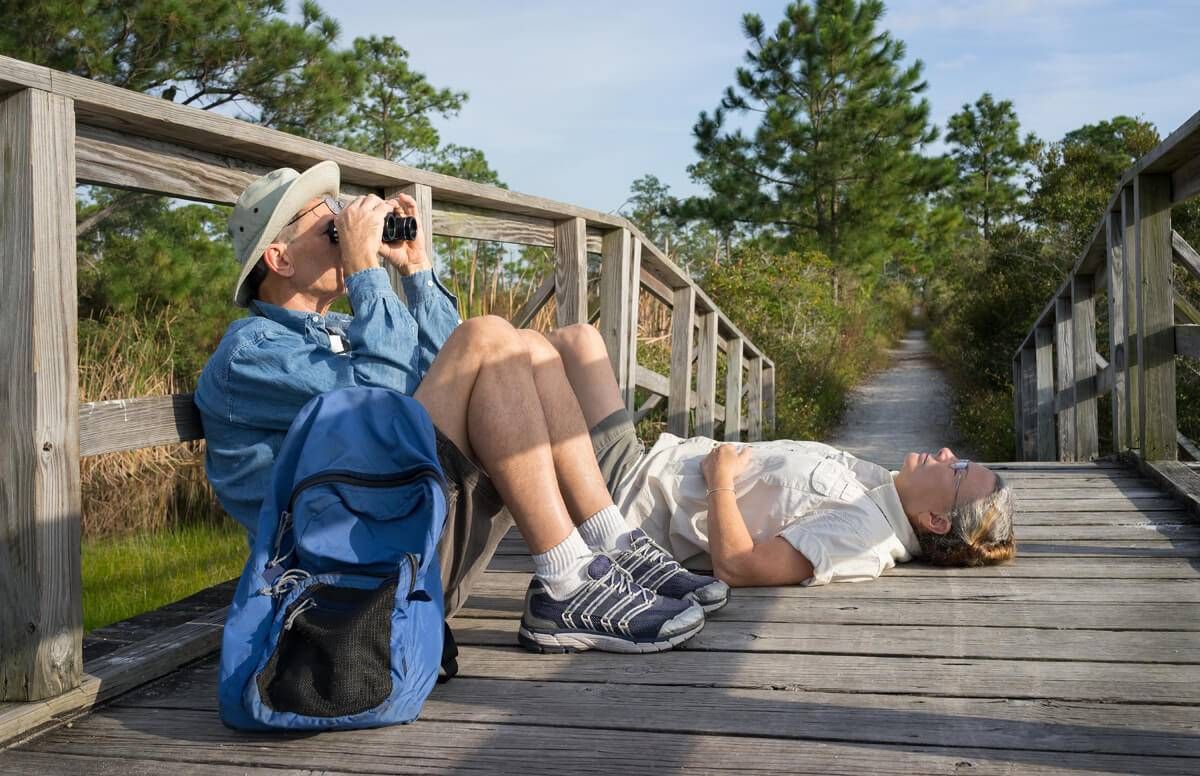A Birdwatching Primer
With this healthy and rewarding hobby, the bird is indeed the word
It’s not easy to find a hobby you can live with throughout your lifetime, but sometimes we’re lucky; if we pay attention to our own surroundings, a hobby will sometimes find us. This is true for many who discover birdwatching — after all, birds surround us whether we live in city high-rises, rural farms or suburban condos. For many, all it takes is an outing or two to get hooked.

Engaging in birding offers a trifecta of benefits at any age: improving stamina and mental awareness, appreciating nature and mastering this pastime with a short learning curve. A love of birding can be a solitary affair or it can be incorporated into a social event, like hiking. Because it can be achieved on any budget, 18 million adults enjoyed birding last year, according to the National Survey of Fishing, Hunting & Wildlife-Related Recreation.
What You’ll Need for Birdwatching
When you’re traipsing through the woods or marsh in search of birds, you’ll want to dress comfortably. Choose lightweight pants, a hat and sunscreen. Good walking shoes and breathable socks made of merino wool, nylon or polyester are practical choices. Bring water in your backpack, plus repellent that will prepare you for ticks or stinging insects, bandages in case you trip on a tree root and a phone in the event you get lost in a sudden storm.
Birding By Sight
A good pair of binoculars is essential for observing birds and will be your most expensive investment. Birdwatchers look for binocs that fit over their glasses and offer clarity of details in order to catch a glimpse quickly, without being too heavy or cumbersome.
The key is choosing the right magnification. Typically, 10x binoculars are best for viewing birds at a distance, but they may have a darker image in low light. An 8x offers a smaller image, but it can be brighter and easier for spotting birds.
If you prefer to buy used binoculars, beware of lenses with scratches or a buildup of condensation. Buy only from a reputable seller who will accept returns, online or otherwise.
Purchase the best pair you can afford — an investment of a few hundred dollars will last for many years of birdwatching.
Once you’ve spotted a bird, the fun is in identifying it easily. There are hundreds of smartphone apps you can buy for this purpose, but it’s still worthwhile to buy a pocket-sized bird field guide or two. A good one has brightly-illustrated drawings or photos of birds, along with an explanation of their calls, markings and habits, and with corresponding range maps to confirm where they live.
Birding by Ear
Some of the best birding moments occur when you discover birds hidden by foliage or night skies. Simply by listening to recordings of birds frequently, you can learn to identify species through their songs and calls. Bird experts often list mnemonics in field guides — words that sound like bird songs — to help identify what you hear. For example, when the unmistakable what-a-cheer-cheer-cheer of a cardinal is in the air, you’ll remember it always.
Birdwatching Hot Spots
As you develop your interest in birding, you might consider visiting different habitats across the country, or even the world, where they thrive. Why not plan a summer trip with birdwatching in mind?
The East coast offers great views of raptors, warblers and shorebirds at the Cape May Observatory in New Jersey.
Prefer going South? On Sanibel Island off the Florida Gulf Coast, the J.N. "Ding" Darling National Wildlife Refuge attracts 300 wading bird species.
If you’re planning a trip to the Southwest desert, Bosque del Apache National Wildlife Refuge in Socorro, New Mexico is a 30,000-acre wilderness bordered by mountains, desert and an abundance of bird species year-round.
There are great Midwest birding opportunities in Ohio at Crane Creek State Park-Magee Marsh Wildlife area, 22 miles east of Toledo, where swans, shorebirds and bald eagles keep birders returning every year. And South Dakota’s flocks of nesting waterfowl, flycatchers, migrating geese and ducks abound in Sand Lake National Wildlife refuge in Columbia.
Waterfowl aficionados will find some of California’s best coastal birding in the Humboldt Bay Wildlife Refuge, with more than 250 species to witness.
Nerdy Birding
Every hobby has its share of hard-core enthusiasts, and birding is no exception. Once you’ve gotten the knack of pishing (attracting small birds by making small, repetitive noises) you might someday advance to twitching, the extreme, competitive chase after rare birds, brought to life in the movie The Big Year.
Even if you’re not that obsessive, a birding vacation might be on your bucket list. An all-inclusive birding adventure in the U.S. or Canada, Central America, Africa or Australasia should be chosen according to your budget as well as your tastes. A brilliantly-designed tour would include a professional leader with an abundance of knowledge of the location, its ecology and behavior of the local bird fauna.
If you prefer birdwatching with a local focus, most counties host annual backyard bird counts and migration counts where volunteers count all the birds they can find in a 24-hour period (including at night, if you enjoy owling). Check your state’s Audubon Society websites or the Cornell Lab of Ornithology for more information.
Perhaps the best thing about birding is that it can be experienced passively (through activities as simple as sitting in your yard or walking in the woods) or actively, like a science.
Whether you become engaged in the colors and calls of birds or obsessed with their flight patterns, feeding and nesting habits, observing our feathered friends offers varying degrees of communing with the natural world.

